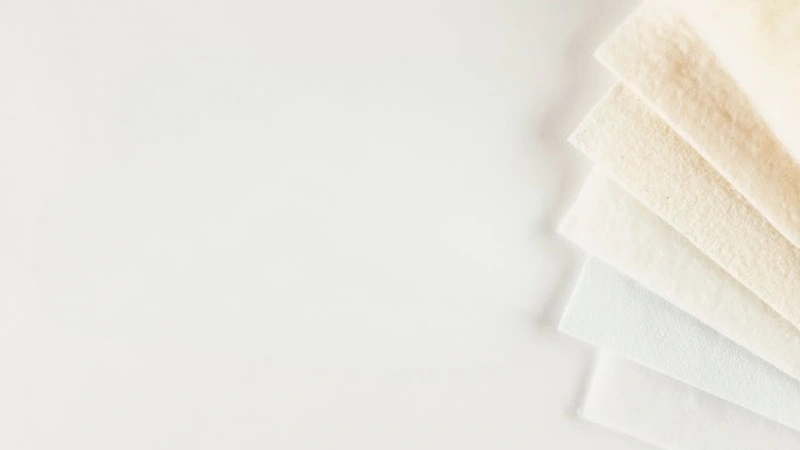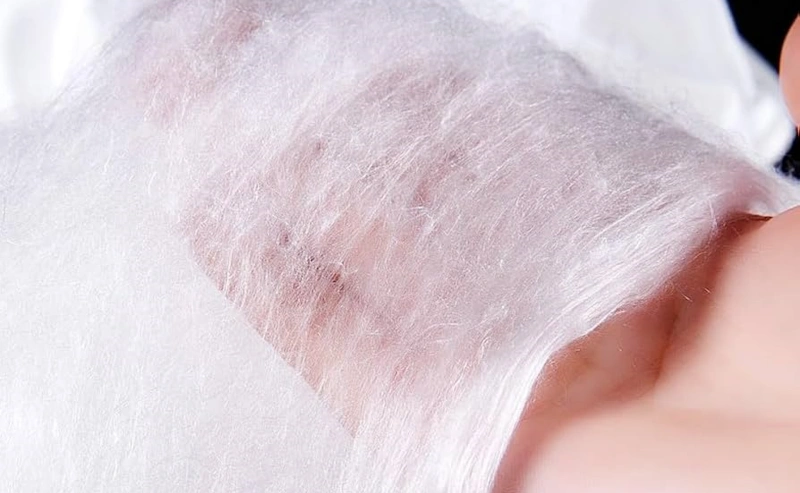If you ever wondered how much batting I need for a quilt, you are not alone. The general rule is simple: always choose batting that is 3 to 6 inches larger than your quilt top on every side. This gives you enough space to work comfortably and keeps your quilt looking neat.
No matter your skill level, picking the right bat does not have to be stressful. You’ll find plenty of high-quality batting options for any quilt project at Fanda Fabrics.
Key Takeaways
Always add 3 to 6 extra inches of batting on each side of your quilt top to allow room for quilting and trimming.
Measure your quilt top carefully before buying batting, and add extra inches based on your quilting method, like home machine or longarm quilting.
Choose the right type of batting—cotton for softness, silk for luxury, or bulk for saving money and convenience.
For small or special projects, use thinner batting or alternatives and adjust the size to prevent bulk and ensure a neat finish.
Use pre-cut batting to save time and stay organized, especially for quick or Quilt-As-You-Go projects.
How Much Batting Do I Need for a Quilt?
General Rule
When you start planning your quilt, one of the first questions that pops up is, “How much batting do I need for a quilt?” The answer is pretty straightforward. You want your batting to be bigger than your quilt top—usually by 3 to 6 inches on every side.
This extra space gives you room to work, helps keep everything smooth, and makes sure you don’t run short when you start quilting.
Think of the batting as a safety net. If your quilt top shifts or stretches a little while you work, the extra batting keeps you covered. You can always trim away the excess later, but you can’t add more if you cut it too small.
The standard guideline in the quilting world says you should add about 4 inches of batting to each side of your quilt top. This rule works for most projects, whether you’re quilting at home or using a longarm machine.
If you’re quilting at home on a domestic machine, leaving 2 to 3 inches of extra batting all around usually does the trick. Some quilters used to add 4 inches but found that 2 to 3 inches is often enough, especially if you baste and quilt from the center out to prevent shifting.
If you’re sending your quilt to a longarm quilter, you’ll want to be a bit more generous. Longarm quilting can pull and shift the layers, so having at least 4 inches of extra batting on each side is important.
This extra batting helps avoid problems like puckering, incomplete coverage, or running out of batting at the edges. It’s much easier to trim away what you don’t need than to try to patch things up later.
Fanda Fabrics offers a wide range of quilt batting sizes and types, so you can always find the perfect fit for your project—whether you’re making a cozy throw or a king-size masterpiece.
Extra Allowance
You might wonder why you need to add so much extra batting. The answer comes down to making your quilting process smoother and your finished quilt look better.
The extra batting lets you smooth and reposition the layers, which helps prevent wrinkles and bubbles.
It acts as insurance. If your quilt top or backing shifts during quilting, the extra batting makes sure you still have enough to cover the whole quilt.
After you finish quilting, you’ll trim away the excess. This step reduces bulk and keeps your binding neat.
If you skip the extra allowance, you risk running short. Batting that’s too small can cause headaches during quilting or binding. Uneven cuts are less of a problem when you have extra batting to work with.
Tip: Always measure twice before you cut your batting. It’s better to have a little too much than not enough!
So, when you ask yourself, “How much batting do I need for a quilt?” remember to add those extra inches. It saves you time, stress, and fabric in the long run. With the right amount of batting, your quilt will come together beautifully, and you’ll enjoy the process from start to finish.
Calculate Batting Size

Measure Your Quilt Top
Before you buy batting, you need to know the exact size of your quilt top. Lay your quilt top flat on a large surface. Grab a metal tape measure or a sturdy ruler—these tools give you the most accurate results.
Measure the width and length of your quilt top, making sure you include any borders or extra blocks you’ve added. Write down these numbers. If you want a quick calculation, you can also use a calculator online or through an app.
Tip: Double-check your measurements. Even a small mistake can make a big difference when you start quilting.
Add Extra Inches
Once you have your quilt top measurements, it’s time to add extra batting. This step gives you a safety margin for basting, quilting, and trimming. For most home machine quilting, add 3 to 4 inches to each side.
If you plan to use a longarm machine, add 4 to 6 inches per side. For small projects like table runners or wall hangings, 1 to 2 inches is usually enough.
Here’s a quick reference table:
Quilting Method | Extra Inches per Side | Total Extra Added (Width & Length) |
|---|---|---|
Home Machine Quilting | 3-4 inches | 6-8 inches |
Longarm Quilting | 4-6 inches | 8-12 inches |
Small Projects | 1-2 inches | 2-4 inches |
This extra batting makes it easier to handle your quilt and ensures you have enough material for a neat finish.
Example Calculation
Let’s walk through a real example. Suppose your quilt top measures 60 inches by 80 inches. If you’re quilting at home, add 4 inches to each side. Your batting should be at least 68 inches by 88 inches. For a longarm machine, you might go up to 72 inches by 92 inches.
Here’s a handy chart for common quilt sizes:
Quilt Type | Finished Quilt Size (inches) | Recommended Batting Size (inches) |
|---|---|---|
Throw | 50 x 65 | 60 x 75 |
64 x 88 | 72 x 96 | |
84 x 92 | 92 x 100 | |
King | 98 x 106 | 108 x 114 |
You can find all these sizes and more at Fanda Fabrics. Whether you want cotton quilt batting for a cozy feel, silk quilt batting for a touch of luxury, or bulk quilt batting for bigger projects, you’ll find the right fit for your next quilt.
Types of Quilt Batting

When you start choosing batting for a quilt, you’ll notice there are several types of batting to pick from. Each one brings something special to your project. Let’s look at the most popular options from Fanda Fabrics and see which might work best for you.
Cotton Quilt Batting
Cotton quilt batting is a classic choice for many quilters. You get a soft, breathable layer that feels cozy but never too heavy. Here’s why you might love it:
Made from 100% natural cotton fibers, so it’s gentle on sensitive skin.
Breathable and naturally hypoallergenic, perfect for year-round comfort.
Adds a vintage, crinkly look after washing, which many quilters adore.
Low loft means your quilt stays flat and easy to sew.
Eco-friendly and biodegradable, great if you want a natural option.
Shows off your stitching details beautifully.
You’ll find cotton batting works well for bed quilts, baby quilts, table runners, and even quilted clothing. If you want a quilt that feels soft, drapes nicely, and keeps you comfortable in any season, cotton is a solid pick.
Silk Quilt Batting

If you want a touch of luxury, silk quilt batting might be your favorite. This type stands out for its softness and beautiful drape.
Silk batting feels incredibly soft and light.
It gives your quilt a smooth, elegant finish.
Offers warmth in winter and stays cool in summer.
Perfect for wearable quilts, heirloom projects, or anything you want to feel extra special.
Works well for both hand and machine quilting.
You might choose silk batting when you want your quilt to look and feel high-end. It’s especially nice for quilts that will be worn or displayed, thanks to its drape and texture.
Bulk Quilt Batting
Do you have lots of projects lined up? Bulk quilt batting could be your best friend.
Buying in bulk saves money, especially if you quilt often.
You can pick the size and thickness that fits your needs.
Bulk batting comes in different materials, like cotton, polyester, or blends.
It stores easily and lasts a long time, so you always have batting ready.
Bulk options work well for anyone making multiple quilts, group projects, or even commercial quilting. You get flexibility and value, making it easier to keep quilting without running out of supplies.
Tip: When choosing batting for a quilt, think about the feel, look, and use of your finished project. The right type of batting can make all the difference!
Special Cases
Small Projects
When you work on mini quilts or table runners, you need to adjust your approach. These projects call for a lighter touch. You want batting that is just a bit larger than your finished piece. This helps with shrinkage after washing. You also want your backing fabric to be bigger than the batting, so you have room for finishing.
Here are some tips for small projects:
Cut batting slightly larger than your quilt top.
Use thinner batting or alternatives like flannel, fleece, or iron-on interfacing. These keep your quilt from getting too puffy.
Press your batting on low heat to remove wrinkles. High heat works best for the backing fabric.
Try a light adhesive or pressing to bond batting and backing. This reduces the need for pins.
If your project has lots of seams, batting or flannel helps prevent seam show-through.
You can use thin polyester batting or white fleece for table runners. These materials stay flat and are easy to quilt. Iron-on interfacing also works well for small projects. If you skip batting, an extra layer of fabric like white flannel adds body.
Double-Sided Quilts
Double-sided or reversible quilts need special attention when you start choosing batting for a quilt. You want both sides to look and feel great. The batting you pick affects the quilt’s structure and comfort.
Consider these options:
Cotton batting gives a soft, breathable feel.
Polyester batting offers more loft and a fluffy look.
Wool batting adds warmth and texture.
Medium-thickness batting works best. Thick batting makes your quilt bulky. Thin batting may not give enough structure. Medium thickness keeps your quilt flexible and comfortable. If your fabric is delicate, you can use interfacing to help the quilt hold its shape.
Pre-Cut Batting
Pre-cut batting makes your quilting life easier. You get batting in shapes and sizes that fit your project. This saves you time because you don’t have to trim batting by hand.
Pre-cut batting works especially well for Quilt-As-You-Go techniques. You can grab a square and start quilting right away. Fanda Fabrics offers a variety of pre-cut batting sizes, so you always find what you need for your next quilt.
Tip: Pre-cut batting helps you stay organized and efficient. You spend less time measuring and more time quilting.
Quilt Batting Size Chart
Common Quilt Sizes
When you start a new quilt, figuring out the right batting size can feel confusing. You want your batting to fit just right—big enough to cover your quilt top with a little extra for trimming, but not so big that you waste material. Here’s a quick reference chart to help you choose the perfect batting size for your next project:
Quilt Type | Typical Width (inches) | Typical Length (inches) | Size Range (Width x Length in inches) |
|---|---|---|---|
Baby | 30 | 40 | 30-40 x 40-50 |
Throw | 54 | 64 | 54-60 x 64-76 |
Twin | 70 | 90 | 64-80 x 80-100 |
Queen | 90 | 108 | 76-90 x 90-110 |
King | 110 | 108 | 90-120 x 90-110 |
You can use this table as a starting point. Always check your quilt top’s measurements and add a few extra inches on each side, just like you learned earlier. This way, you’ll have enough batting for basting and quilting without running short.
Tip: If your quilt doesn’t match a standard size, don’t worry! Fanda Fabrics offers batting in a wide range of standard and custom sizes. You can always find the right fit for your project, whether you’re making a tiny baby quilt or a huge king-size masterpiece.
Choosing the right batting size helps your quilt come together smoothly. You’ll spend less time trimming and more time enjoying the creative process. If you ever need a special size, just check out the options at Fanda Fabrics. They make it easy to get exactly what you need.
Conclusion
You can figure out how much batting you need for your quilt by following a few simple steps: measure your quilt top, add extra inches for quilting ease, smooth and cut your batting carefully, and use the quick reference chart for guidance.
That extra allowance makes quilting smoother and helps you get neat edges every time. If you have questions or want to explore more options, Fanda Fabrics offers helpful support and a wide range of batting choices. Check out the chart below to make picking your next quilt batting even easier!
FAQ
How do I know which batting thickness to choose?
Think about how you want your quilt to feel. Thicker batting gives you a puffier, warmer quilt. Thinner batting makes your quilt lighter and easier to sew. If you’re unsure, start with a medium thickness for most projects.
Can I use different types of batting in one quilt?
Yes, you can mix batting types if you want to experiment. Just make sure the loft and texture feel similar. Mixing can change how your quilt drapes and feels, so test a small piece first.
Should I pre-wash my batting before quilting?
Most quilters skip pre-washing. Modern batting usually shrinks very little. If you want a crinkly, vintage look, use it straight from the package. If you want less shrinkage, check the label and pre-wash if needed.
What if my quilt is an unusual size?
No worries! Measure your quilt top, add extra inches, and look for batting that fits. Fanda Fabrics offers custom sizes, so you can always find the right fit for your unique project.
Can I quilt by hand or machine with all types of batting?
You can use most batting types for both hand and machine quilting. Some, like silk or cotton, are easier to sew by hand. If you’re new, try cotton or a cotton blend—they’re easy to handle and give great results.
